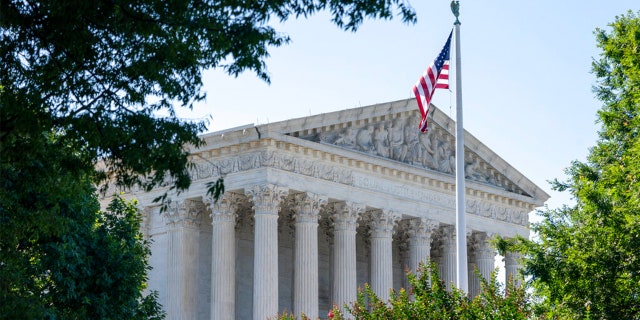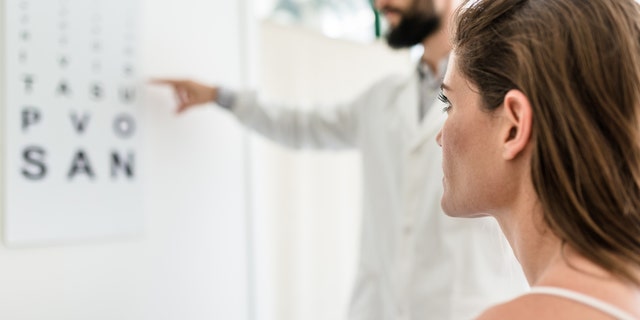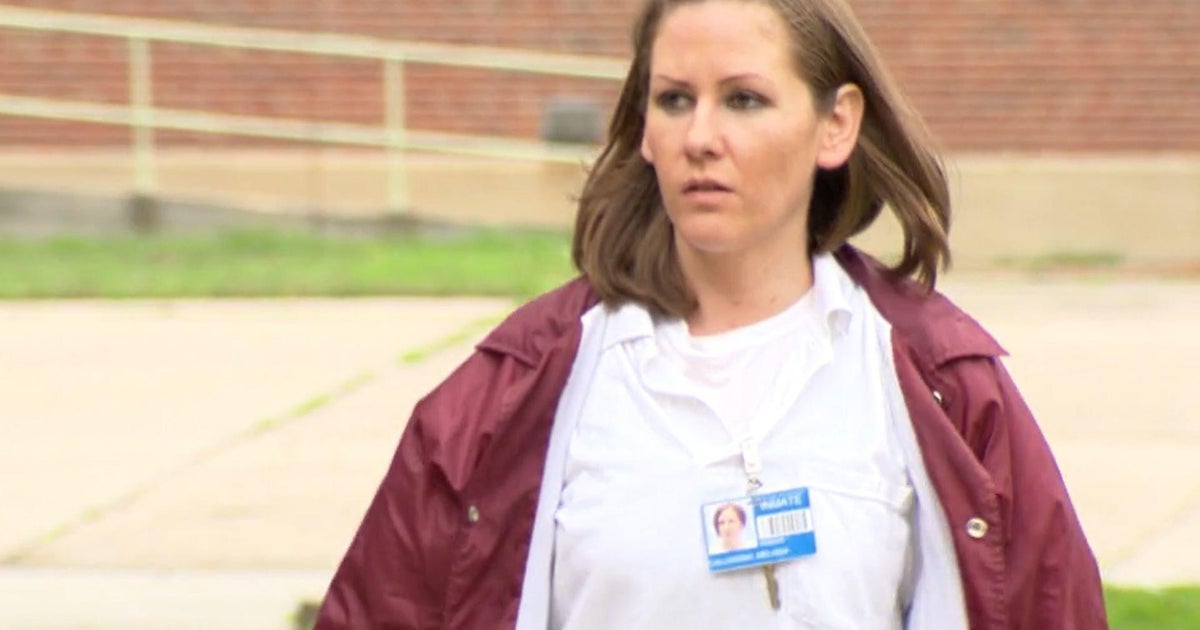Health
‘Adversity scores’ to boost medical school diversity? It would ‘ignore’ patients’ best interests, says expert

After the Supreme Court’s recent ruling that it is unconstitutional for educational institutions to use race as a factor for college admissions, some medical schools reportedly are looking into other ways to try to bring in a diverse study body.
One so-called idea is the notion of considering adversity when weighing applicants.
President Biden himself said after the Supreme Court ruling, “What I propose for consideration is a new standard where colleges take into account the adversity a student has overcome when selecting among qualified applicants.”
ALAN DERSHOWITZ PUSHES BACK ON LEFT’S MELTDOWN OVER SCOTUS: I’M A LIBERAL AND I AGREE WITH ALL 3 RULINGS
Chief Justice John G. Roberts Jr. wrote that both Harvard University’s and the University of North Carolina’s admissions programs unlawfully discriminated against Asian Americans by considering race as a specific factor in admissions.
“Both programs lack sufficiently focused and measurable objectives warranting the use of race, unavoidably employ race in a negative manner, involve racial stereotyping, and lack meaningful end points,” he noted.
Medical schools around the country have been trying to increase the number of underrepresented minorities to better reflect the populations they serve. (iStock)
The ruling still allows colleges and universities to consider race in the overall context of an applicant’s life experiences.
“In other words, the student must be treated based on his or her experiences as an individual — not on the basis of race,” Roberts added, in his majority opinion.
Diverse medical class at UC Davis
One medical school, the University of California, Davis (UC Davis), has gained national attention for having one of the most diverse medical school classes in the nation, although its own state banned affirmative action in 1996.
The medical school became well-known for its controversial affirmative action policies after a contentious 5-4 Supreme Court decision on June 28, 1978, when the court ruled its quota system was unconstitutional.

The Supreme Court building in Washington, D.C. UC Davis’ medical school became well-known for its controversial affirmative action policies after the Supreme Court ruled 5-4 on June 28, 1978, that the school’s quota system was unconstitutional. (AP Photo/Jacquelyn Martin)
Allan Bakke, a White student, sued the school after he was twice denied admission when he learned the school reserved slots for students of color, according to the school’s website.
Although the court ruled in his favor, it decided the school still could allow race as one of many factors to achieve a diverse class — but it could not have specific quotas.
The most recently admitted UC Davis medical class contains 133 students, with 84% coming from “disadvantaged” backgrounds — 14% are Black and 30% are Hispanic or Latinx, according to the school’s matriculant data.
The most recently admitted UC Davis medical class contains 133 students, with 84% coming from “disadvantaged” backgrounds.
“Word has gotten out,” noted a recent New York Times article, “about the U.C. Davis scale.”
UNIVERSITY OF MINNESOTA MED SCHOOL STUDENTS PLEDGE TO FIGHT ‘WHITE SUPREMACY’ AT CEREMONY
Some 20 schools reportedly “recently requested more information” about the process, the Times piece noted, quoting Dr. Mark Henderson, head of admissions at UC Davis.
Fox News Digital reached out to UC Davis to learn more details about how it boosts diversity. The school declined to comment.
‘Race-neutral’ score
Multiple reports highlight the UC Davis socioeconomic disadvantage scale, or S.E.D, to help increase the number of students of color, especially those who come from unrepresented backgrounds.

“Holistic admissions programs can help increase diversity even when race or ethnicity are not factors that can be considered,” said one individual. (Cyberguy.com)
Every applicant is rated from 0 to 99 based on socio-economic characteristics, such as family income or education of parents, yet admissions decisions are still based on a complete evaluation combined with the “race-neutral” score.
But if the student is a child of doctors, then that student receives a score of zero, per a recent report.
“We are familiar with this particular program and have followed its progress, but were not participants in its design or implementation,” said Geoffrey Young, PhD, senior director of Transforming the Health Care Workforce at AAMC in Washington, D.C.
“What we do know is that the [recent] court’s decision allows admissions committees to strengthen or implement holistic review in admissions to consider the whole individual, including their academic metrics and personal, lived experiences,” he added.
BULLIES IN WHITE COATS? ‘TOO MANY’ HEALTH CARE WORKERS EXPERIENCE TOXIC WORKPLACES, STUDIES SHOW
“Holistic admissions programs can help increase diversity even when race or ethnicity are not factors that can be considered,” he also said.
Critics of adversity scores say this minimizes individuals by crunching their life circumstances into a single score.

“The notion that adversity scores should be a component of medical school admissions depends on the flawed notion that physicians who have overcome some adversity will produce better health care outcomes,” said one individual interviewed by Fox News Digital. (iStock)
In 2019, The College Board, the nonprofit that administers the SAT, piloted a program to measure a student’s “adversity” from 0 to 100 — but after receiving immense backlash later that year, the board scrapped the score.
Even so, medical schools around the country have tried for years to increase the number of underrepresented minorities to better reflect the population they serve.
Still, only about 6% of practicing doctors are Black, although there are roughly twice the number who identify as such in the country, according to a 2022 Association of American Medical Colleges (AAMC) report.
Also, only 0.1% practicing doctors identify as Native Hawaiian or Pacific Islander, while only 0.3% are American Indian or Alaska Native.
‘Flawed notion’ for producing ‘better health care outcomes’
Others argue “adversity scoring” does not usher in the best and brightest physicians.
“Medical school does not exist to ameliorate society’s problems. It exists to create competent physicians,” Dr. Stanley Goldfarb, board chair of Do No Harm based in Philadelphia, Pennsylvania, told Fox News Digital.

“To feel that individuals who have overcome some prior difficulties in their life have a unique right to become physicians simply ignores the best interest of patients,” said one source. (iStock)
Do No Harm fights for patients and physicians against discriminatory ideology in medicine, according to its website.
“The notion that adversity scores should be a component of medical school admissions depends on the flawed notion that physicians who have overcome some adversity will produce better health care outcomes,” he added.
“Medical school does not exist to ameliorate society’s problems. It exists to create competent physicians.”
“To feel that individuals who have overcome some prior difficulties in their life have a unique right to become physicians simply ignores the best interest of patients.”
Despite its drawbacks, though, some experts say that adversity scores are not unconstitutional.
CLICK HERE TO SIGN UP FOR OUR HEALTH NEWSLETTER
“The recent Supreme Court decision targeted the explicit consideration of race in college admissions,” Jerry Kang, UCLA distinguished professor of law and Asian American studies, who is based in Los Angeles, told Fox News Digital.
“It does not prevent taking socioeconomic class into account,” added Kang, who is also UCLA’s founding vice chancellor for equity, diversity and inclusion.
“Any good faith measure of an individual’s overcoming adversity, whether it be qualitative or quantitative, may be considered in the admissions process.”

Health
Semaglutide Pills and Injections Vs. Drops: Experts Weigh In | Woman's World

Sign Up
Create a free account to access exclusive content, play games, solve puzzles, test your pop-culture knowledge and receive special offers.
Already have an account? Login
Use left and right arrow keys to navigate between menu items.
Use escape to exit the menu.
Health
Jennifer Hudson Lost 80-Lbs Without Depriving Herself—Learn Her Secrets

Sign Up
Create a free account to access exclusive content, play games, solve puzzles, test your pop-culture knowledge and receive special offers.
Already have an account? Login
Use left and right arrow keys to navigate between menu items.
Use escape to exit the menu.
Health
Kennedy’s Plan for the Drug Crisis: A Network of ‘Healing Farms’

Though Mr. Kennedy’s embrace of recovery farms may be novel, the concept stretches back almost a century. In 1935, the government opened the United States Narcotic Farm in Lexington, Ky., to research and treat addiction. Over the years, residents included Chet Baker and William S. Burroughs (who portrayed the institution in his novel, “Junkie: Confessions of an Unredeemed Drug Addict”). The program had high relapse rates and was tainted by drug experiments on human subjects. By 1975, as local treatment centers began to proliferate around the country, the program closed.
In America, therapeutic communities for addiction treatment became popular in the 1960s and ’70s. Some, like Synanon, became notorious for cultlike, abusive environments. There are now perhaps 3,000 worldwide, researchers estimate, including one that Mr. Kennedy has also praised — San Patrignano, an Italian program whose centerpiece is a highly regarded bakery, staffed by residents.
“If we do go down the road of large government-funded therapeutic communities, I’d want to see some oversight to ensure they live up to modern standards,” said Dr. Sabet, who is now president of the Foundation for Drug Policy Solutions. “We should get rid of the false dichotomy, too, between these approaches and medications, since we know they can work together for some people.”
Should Mr. Kennedy be confirmed, his authority to establish healing farms would be uncertain. Building federal treatment farms in “depressed rural areas,” as he said in his documentary, presumably on public land, would hit political and legal roadblocks. Fully legalizing and taxing cannabis to pay for the farms would require congressional action.
In the concluding moments of the documentary, Mr. Kennedy invoked Carl Jung, the Swiss psychiatrist whose views on spirituality influenced Alcoholics Anonymous. Dr. Jung, he said, felt that “people who believed in God got better faster and that their recovery was more durable and enduring than people who didn’t.”
-
/cdn.vox-cdn.com/uploads/chorus_asset/file/25822586/STK169_ZUCKERBERG_MAGA_STKS491_CVIRGINIA_A.jpg)
/cdn.vox-cdn.com/uploads/chorus_asset/file/25822586/STK169_ZUCKERBERG_MAGA_STKS491_CVIRGINIA_A.jpg) Technology1 week ago
Technology1 week agoMeta is highlighting a splintering global approach to online speech
-

 Science1 week ago
Science1 week agoMetro will offer free rides in L.A. through Sunday due to fires
-
/cdn.vox-cdn.com/uploads/chorus_asset/file/23935558/acastro_STK103__01.jpg)
/cdn.vox-cdn.com/uploads/chorus_asset/file/23935558/acastro_STK103__01.jpg) Technology1 week ago
Technology1 week agoAmazon Prime will shut down its clothing try-on program
-

 News1 week ago
News1 week agoMapping the Damage From the Palisades Fire
-
/cdn.vox-cdn.com/uploads/chorus_asset/file/25826211/lorealcellbioprint.jpg)
/cdn.vox-cdn.com/uploads/chorus_asset/file/25826211/lorealcellbioprint.jpg) Technology7 days ago
Technology7 days agoL’Oréal’s new skincare gadget told me I should try retinol
-
/cdn.vox-cdn.com/uploads/chorus_asset/file/25832751/2192581677.jpg)
/cdn.vox-cdn.com/uploads/chorus_asset/file/25832751/2192581677.jpg) Technology3 days ago
Technology3 days agoSuper Bowl LIX will stream for free on Tubi
-

 Business5 days ago
Business5 days agoWhy TikTok Users Are Downloading ‘Red Note,’ the Chinese App
-
/cdn.vox-cdn.com/uploads/chorus_asset/file/25835602/Switch_DonkeyKongCountryReturnsHD_scrn_19.png)
/cdn.vox-cdn.com/uploads/chorus_asset/file/25835602/Switch_DonkeyKongCountryReturnsHD_scrn_19.png) Technology1 day ago
Technology1 day agoNintendo omits original Donkey Kong Country Returns team from the remaster’s credits















